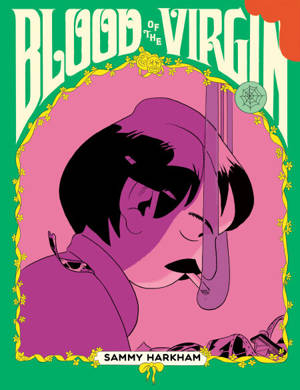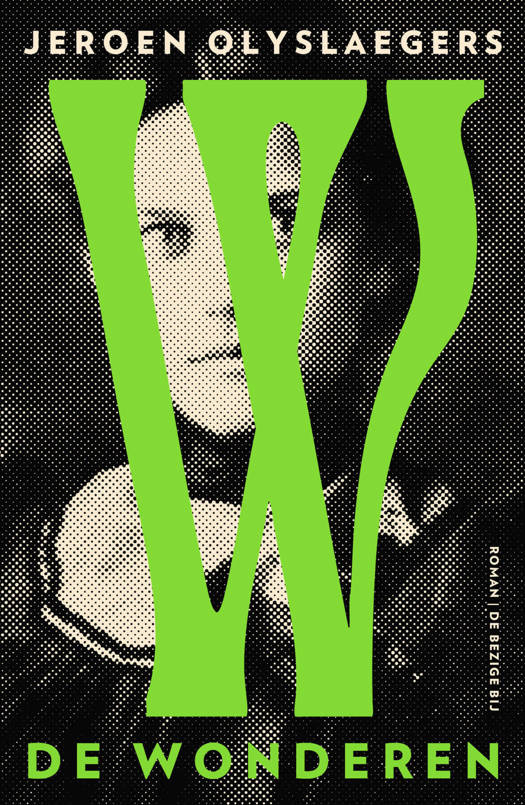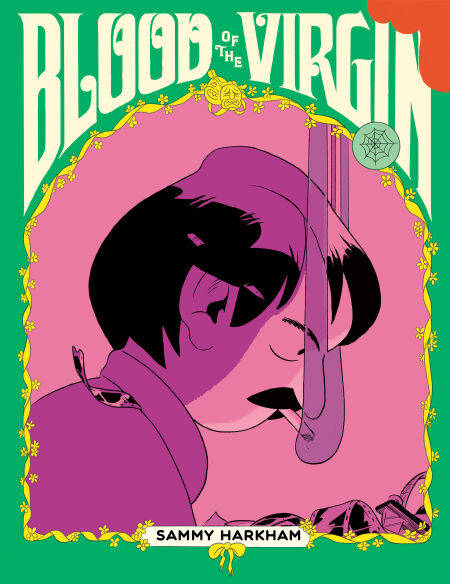
- Afhalen na 1 uur in een winkel met voorraad
- Gratis thuislevering in België vanaf € 30
- Ruim aanbod met 7 miljoen producten
- Afhalen na 1 uur in een winkel met voorraad
- Gratis thuislevering in België vanaf € 30
- Ruim aanbod met 7 miljoen producten
Zoeken
€ 18,50
+ 18 punten
Uitvoering
Omschrijving
“A story about storytelling...Conjures up the grindhouse movie-making scene in 1970s Los Angeles and tracks an ambitious young man’s flailing attempts to build a family and a career as a film arteest in that debased world...A book with a lot of heart.” —Art Spiegelman, bestselling author of MAUS
Fourteen years in the making, renowned and beloved graphic novelist Sammy Harkham finally delivers his epic story of artistic ambition, the heartbreak it can bring, and what it means to be human
YOU CAN BURN IN HELL
Set primarily in Los Angeles in 1971, Blood of the Virgin is the story of twenty‑seven‑year‑old Seymour, an Iraqi Jewish immigrant film editor who works for an exploitation film production company. Sammy Harkham brings us into the underbelly of Los Angeles during a crucial evolutionary moment in the industry from the last wheeze of the studio system to the rise of independent filmmaking.
Seymour, his wife, and their new baby struggle as he tries to make it in the movie business, writing screenplays on spec and pining for the chance to direct. When his boss buys one of his scripts for a project called Blood of the Virgin and gives Seymour the chance to direct it, what follows is a surreal, tragicomic making-of journey. As Seymour’s blind ambition propels the movie, his home life grows increasingly fraught. The film’s production becomes a means to spiral out into time and space, resulting in an epic graphic novel that explores the intersection of twentieth‑century America, parenthood, sex, the immigrant experience, the dawn of early Hollywood, and, shockingly, the Holocaust.
Like a cosmic kaleidoscope, Blood of the Virgin shifts and evolves with each panel, widening its context as the story unfolds, building an intricate web of dreams and heartbreak, allowing the reader to zoom in to the novel’s core: the bittersweet cost of coming into one’s own.
Fourteen years in the making, renowned and beloved graphic novelist Sammy Harkham finally delivers his epic story of artistic ambition, the heartbreak it can bring, and what it means to be human
YOU CAN BURN IN HELL
Set primarily in Los Angeles in 1971, Blood of the Virgin is the story of twenty‑seven‑year‑old Seymour, an Iraqi Jewish immigrant film editor who works for an exploitation film production company. Sammy Harkham brings us into the underbelly of Los Angeles during a crucial evolutionary moment in the industry from the last wheeze of the studio system to the rise of independent filmmaking.
Seymour, his wife, and their new baby struggle as he tries to make it in the movie business, writing screenplays on spec and pining for the chance to direct. When his boss buys one of his scripts for a project called Blood of the Virgin and gives Seymour the chance to direct it, what follows is a surreal, tragicomic making-of journey. As Seymour’s blind ambition propels the movie, his home life grows increasingly fraught. The film’s production becomes a means to spiral out into time and space, resulting in an epic graphic novel that explores the intersection of twentieth‑century America, parenthood, sex, the immigrant experience, the dawn of early Hollywood, and, shockingly, the Holocaust.
Like a cosmic kaleidoscope, Blood of the Virgin shifts and evolves with each panel, widening its context as the story unfolds, building an intricate web of dreams and heartbreak, allowing the reader to zoom in to the novel’s core: the bittersweet cost of coming into one’s own.
Specificaties
Betrokkenen
- Auteur(s):
- Uitgeverij:
Inhoud
- Aantal bladzijden:
- 296
- Taal:
- Engels
- Reeks:
Eigenschappen
- Productcode (EAN):
- 9780593316702
- Verschijningsdatum:
- 1/05/2023
- Uitvoering:
- E-book
- Beveiligd met:
- Adobe DRM
- Formaat:
- ePub 3 Fixed Layout

Alleen bij Standaard Boekhandel
+ 18 punten op je klantenkaart van Standaard Boekhandel
Beoordelingen
We publiceren alleen reviews die voldoen aan de voorwaarden voor reviews. Bekijk onze voorwaarden voor reviews.








